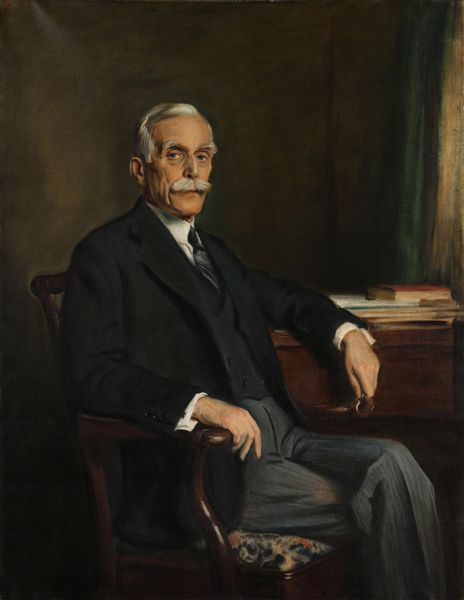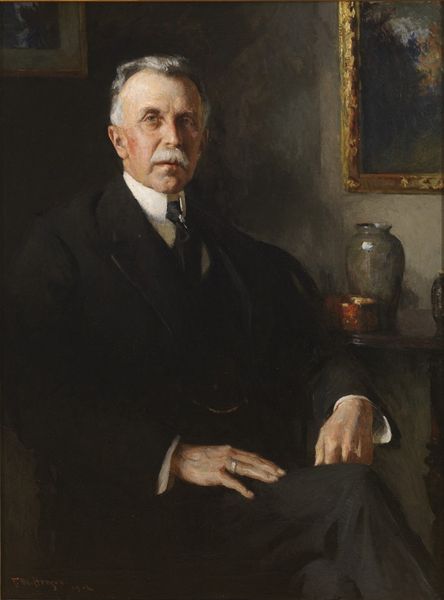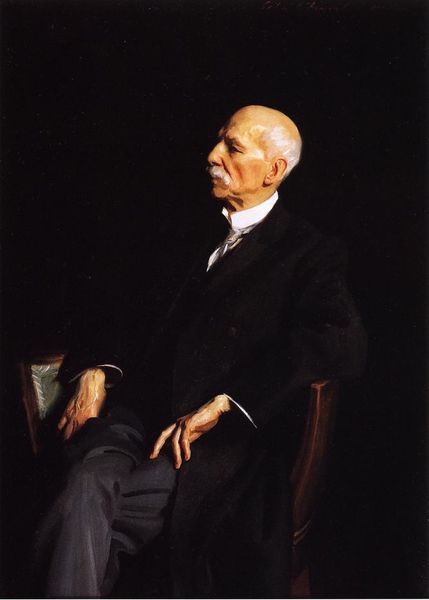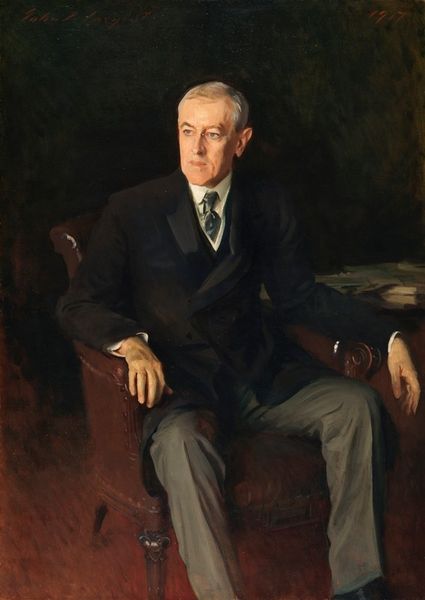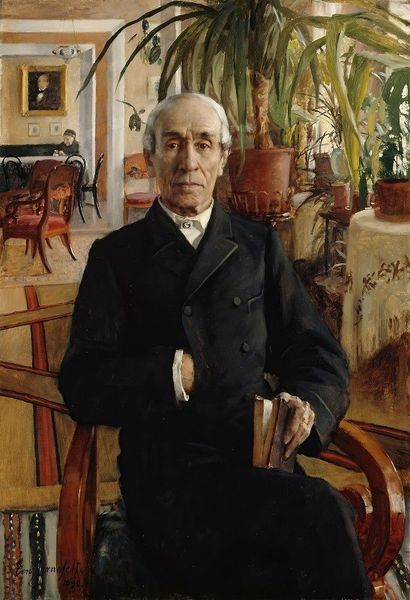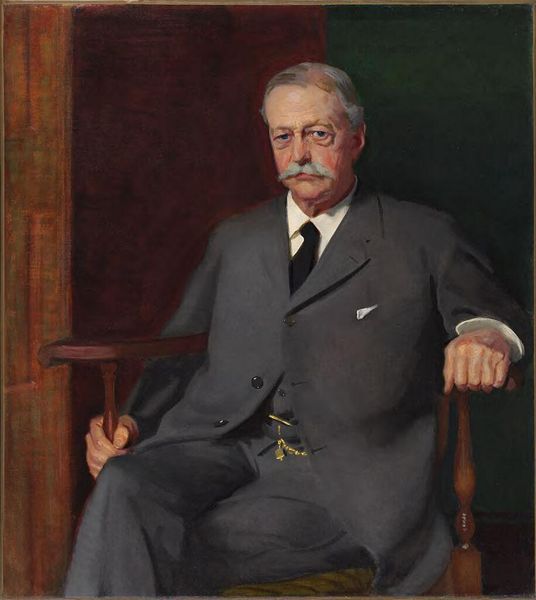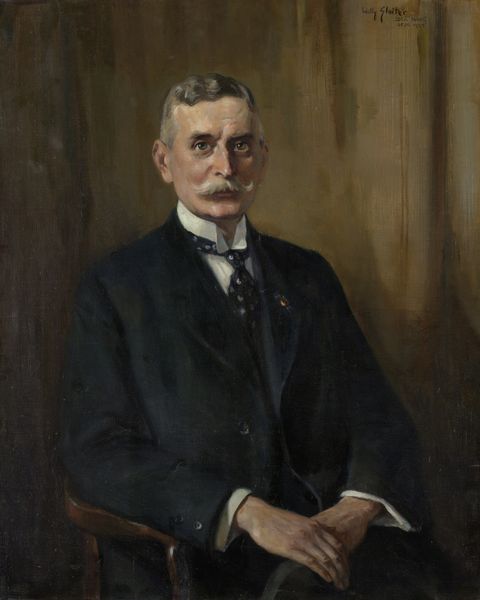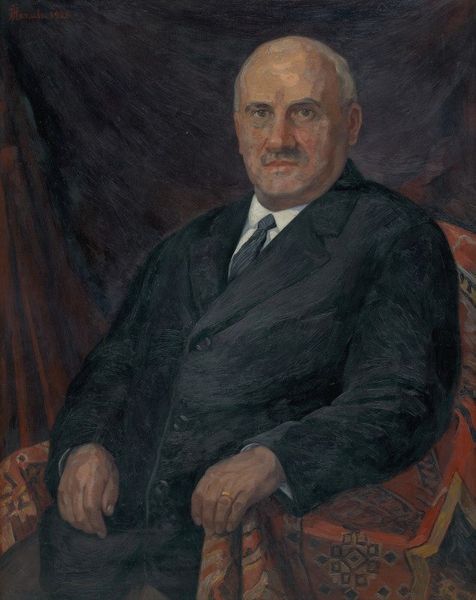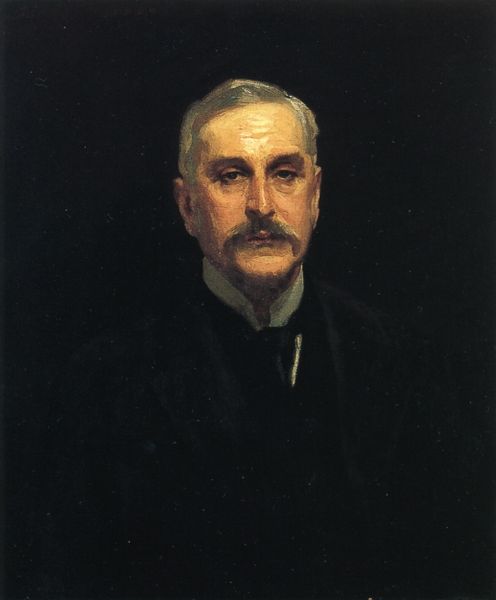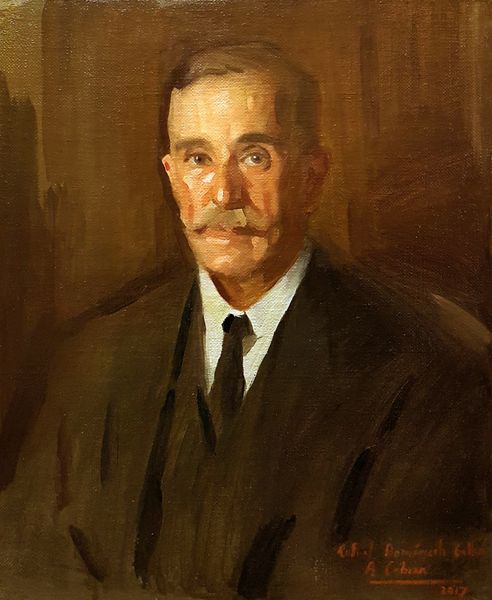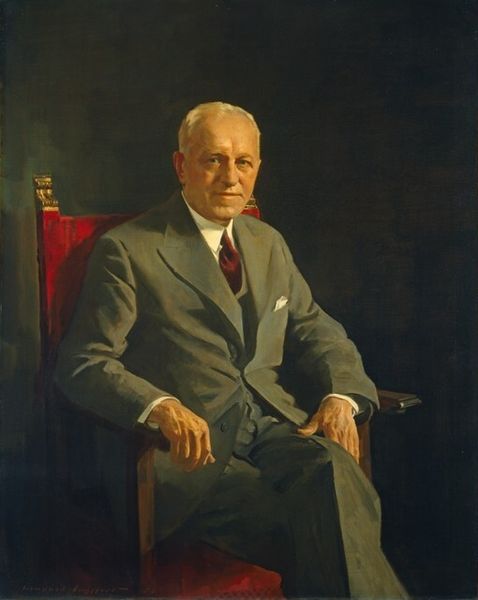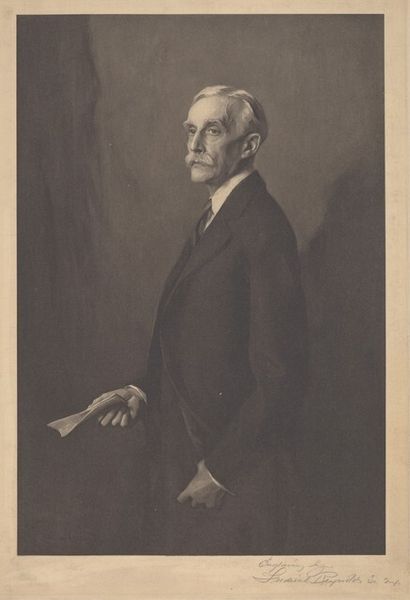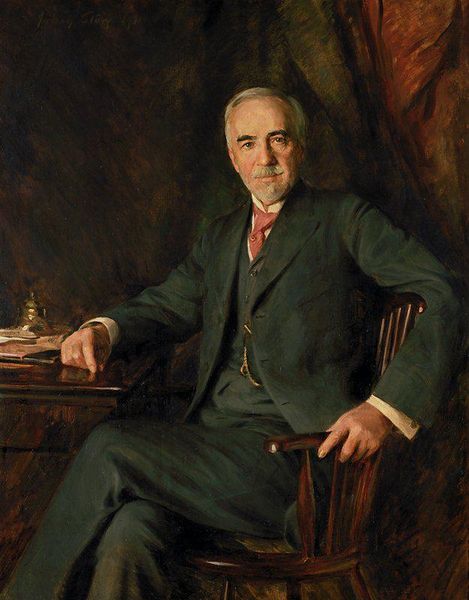
painting, oil-paint
#
portrait
#
painting
#
oil-paint
#
academic-art
#
modernism
#
realism
Dimensions: overall: 133.4 x 105.4 cm (52 1/2 x 41 1/2 in.) framed: 162.6 x 134.6 x 10.1 cm (64 x 53 x 4 in.)
Copyright: National Gallery of Art: CC0 1.0
Curator: This is Sir Oswald Birley’s portrait of Andrew W. Mellon, completed in 1933 using oil paint. Editor: My immediate reaction is one of formality, even a sense of austerity. The limited palette of blacks, greys, and browns reinforces a feeling of restraint. Curator: Indeed. Mellon was a figure of immense power, having served as Secretary of the Treasury under three presidents. The portrait reflects his establishment persona, but let’s also remember this was painted during the Great Depression. Birley faced the challenge of depicting a man tied to an economic system under intense scrutiny. Editor: The composition is interesting. The subject sits comfortably in a wooden chair; he holds something small, perhaps a ring, between the fingers of his right hand, drawing attention to his state of ease within his environment. The light seems meticulously handled. Look how Birley captures the subtle gleam on his tailored suit. Curator: His attire also subtly conveys his social standing. It reinforces ideas related to capital and legacy; the soft glow of the background with papers creates this feeling of historical context. His unflinching gaze speaks to an unflappable confidence. Consider Mellon’s complicated legacy too. As a philanthropist, he funded the National Gallery of Art, yet, at the time this portrait was made, many questioned the distribution of wealth in America. Editor: Absolutely, but the muted colors Birley employed and the sharp, almost academic approach speak to something other than the economic questions surrounding this subject. Mellon appears solid, in command. This wasn’t about probing beneath the surface, I think, but cementing an image, an ideal. Curator: And it succeeds in that regard. A successful man rendered during a critical moment in American economic history. It reminds us of the complexities of public perception and how visual culture mediates our understanding of power. Editor: From a formalist standpoint, I leave with the enduring impression of refined control in brushwork and color and, I suppose, Mellon as well.
Comments
No comments
Be the first to comment and join the conversation on the ultimate creative platform.
